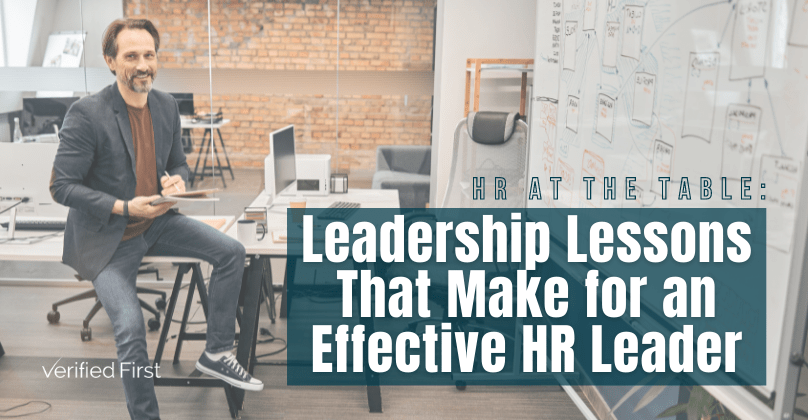
The foundation of every great organization starts with 1. People and 2. Effective leaders. While a leader can single-handedly impact productivity, engagement, and retention, not all do so in a positive manner. As a result of poor leadership, 70% of employees are unhappy in their jobs, creating culture, turnover, and productivity issues.
Recognizing the power of an effective leader is crucial as HR leaders face the “great resignation.” As they say, people don’t quit their jobs; they quit their bosses. Effective leadership is a key component of retaining quality employees. That’s why we hosted Marine Veteran and BeyondTrust’s Director of HR Operations, Walter Marques, for episode eight of our HR at the Table webinar series. With his insight, we’ll explore leadership lessons that make for an effective HR leader.
Effective HR leaders empower those around them to reach their full potential. In terms of the workplace, empowered employees are more engaged, innovative, loyal, and productive. The key? Being a servant leader. Servant leaders place their own aspirations and desires aside while supporting those around them by unlocking and capitalizing on their strengths. Ultimately, servant leaders are dedicated to the organization’s mission and the people they serve, impacting overall organizational success.
According to SHRM, servant leaders:
Demonstrating servant leadership sets the standard for future leaders. HR’s role in being an effective servant leader is to help guide the organization and its employees in the right direction by serving employees in areas of the employee experience and career development.
As a reflection of servant leadership, the best leaders are the ones who promote others to become leaders themselves. However, 69% of Millennials believe the workplace lacks leadership development opportunities. As a result, organizations that fail to develop leaders lose 71% of Millennials within the first two to three years of employment — an avoidable cost.
Part of being an effective HR leader means identifying leadership potential in employees and finding opportunities within the organization to hone in on and utilize employee skills. HR can promote leaders by:
While developing leaders, it’s vital to identify leadership gaps within minority groups such as women and people of color. Despite women holding 59% of master’s degrees, 48.5% of law degrees, and 47.5% in medical qualifications (American Progress), only 29% of the senior leadership positions in the world are held by females. On top of that, only 3.2% of executive or senior leadership roles are held by black professionals. Neglecting these groups not only limits the potential for developing successful and robust leaders, but it hinders the potential of your organization.
As HR acts as role models and influencers in the workplace, leading with purpose is more important than it has ever been. Walter finds that “people don’t follow causes or organizations. They follow worthy leaders who promote causes that they can believe in.”
In fact:
As the workplace evolves, employees are demanding purpose-driven work. If HR leaders can’t effectively communicate each employee’s purpose to an organization’s mission, buy-in and employee commitment are easily lost. Whether HR is the first point of contact, a power of influence, or a decision-maker in the employee experience, they should communicate and model the value of what purpose-driven leadership looks like.
Part of leading with purpose means sticking by your core values. A good leader does what’s right and makes ethically sound decisions, even when pressured to concede. Walter encourages leaders to question if they “have the courage to stand up for what is right and voice their opinion despite the opposition they may receive from senior executives.”
Although leading with purpose helps align team members to the organization’s mission, an effective HR leader can bring other strategies together to impact engagement, productivity, and profitability. By relaying the organization’s mission through modeling, coaching, and policy creation, HR can create a shared vision for organizational success.
To align under a common mission, Walter suggests HR leaders encourage organizational leaders to:
As relationship builders, a key element of effective HR leadership is recognizing HR’s influence on other leaders. That’s why it is crucial for HR to develop the proper relationships to empower other organizational leaders to lead more effectively.
When everyone is on the same page, the vision for success becomes more clear. In fact, companies with a clear mission result in 63-65% of employees being more motivated and passionate about their work.
Overall, HR leaders (AKA YOU) have a great opportunity to influence the way organizations operate, align, and retain top talent.
But first, it has to start with HR’s devotion to leadership by:
For more insight on being an effective HR leader, find out how you can align with talent acquisition on DE&I initiatives in our upcoming HR at the Table webinar!
Also, if you’re looking to be a more effective HR leader and focus on value-added initiatives like leadership development, consider streamlining your background screening process with our one-click browser integration!